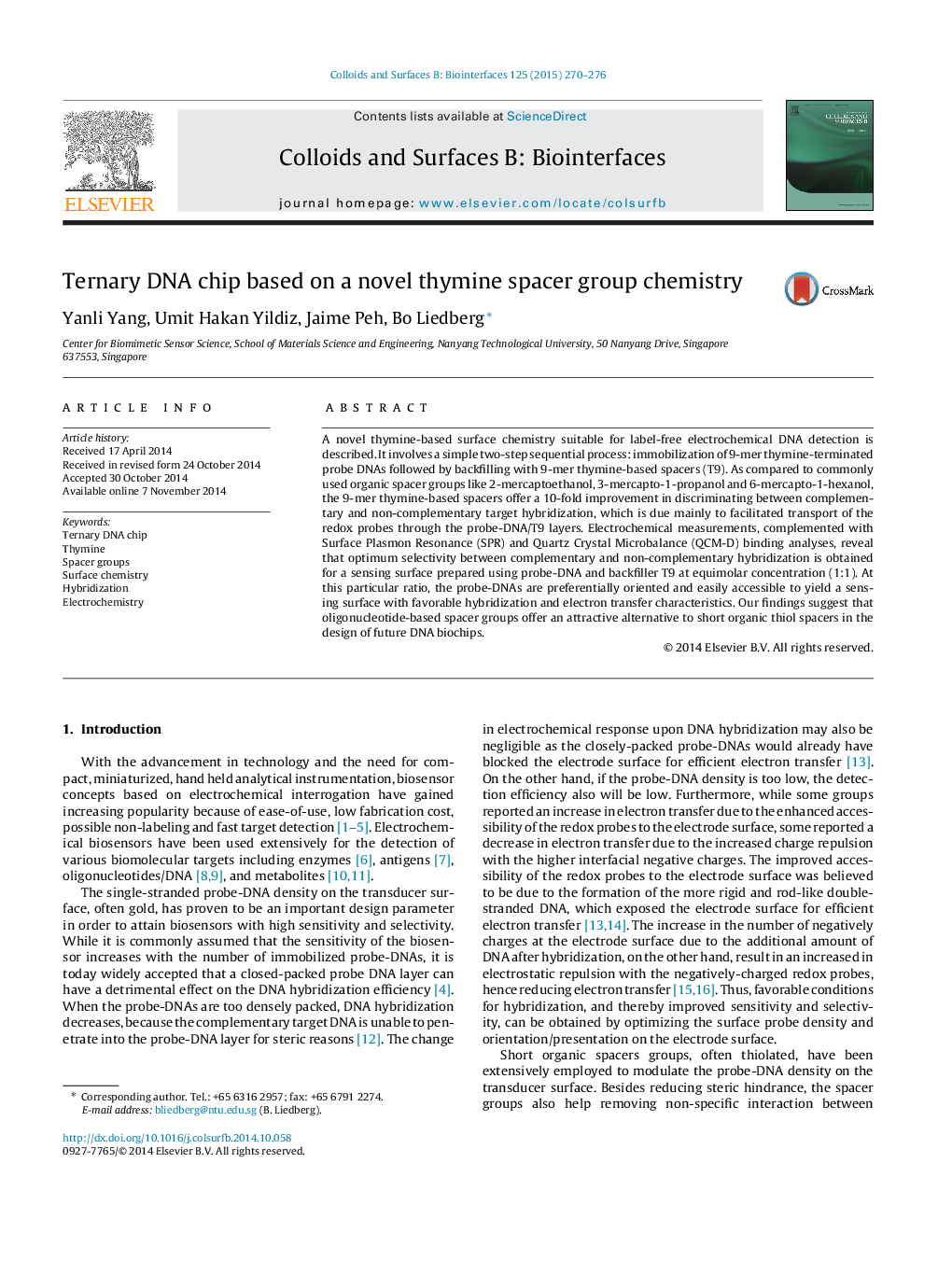| Article ID | Journal | Published Year | Pages | File Type |
|---|---|---|---|---|
| 599593 | Colloids and Surfaces B: Biointerfaces | 2015 | 7 Pages |
•Novel thymine-based surface chemistry suitable for label-free electrochemical DNA detection.•10-fold improvement in discriminating between complementary and non-complementary target hybridization as compared to biochips backfilled with conventional short thiol spacers.•An attractive alternative to short organic thiol spacers in the design of future DNA biochips.
A novel thymine-based surface chemistry suitable for label-free electrochemical DNA detection is described. It involves a simple two-step sequential process: immobilization of 9-mer thymine-terminated probe DNAs followed by backfilling with 9-mer thymine-based spacers (T9). As compared to commonly used organic spacer groups like 2-mercaptoethanol, 3-mercapto-1-propanol and 6-mercapto-1-hexanol, the 9-mer thymine-based spacers offer a 10-fold improvement in discriminating between complementary and non-complementary target hybridization, which is due mainly to facilitated transport of the redox probes through the probe-DNA/T9 layers. Electrochemical measurements, complemented with Surface Plasmon Resonance (SPR) and Quartz Crystal Microbalance (QCM-D) binding analyses, reveal that optimum selectivity between complementary and non-complementary hybridization is obtained for a sensing surface prepared using probe-DNA and backfiller T9 at equimolar concentration (1:1). At this particular ratio, the probe-DNAs are preferentially oriented and easily accessible to yield a sensing surface with favorable hybridization and electron transfer characteristics. Our findings suggest that oligonucleotide-based spacer groups offer an attractive alternative to short organic thiol spacers in the design of future DNA biochips.
Graphical abstractFigure optionsDownload full-size imageDownload as PowerPoint slide
